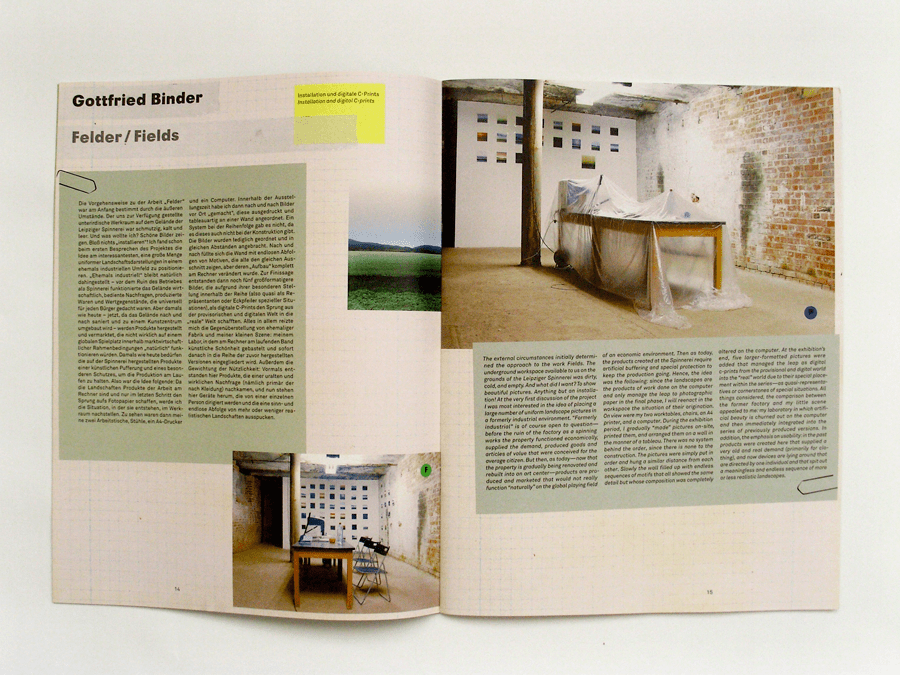Dein Warenkorb ist gerade leer!
WERKRAUM
Ausstellung in der Werkraumhalle, Spinnerei Leipzig

Erschienen
Bearbeitet
Ausstellung in der Werkraumhalle, Spinnerei Leipzig
Fields
The external circumstances initially determined the approach to the work Fields. The underground workspace available to us on the grounds of the Leipziger Spinnerei was dirty, cold, and empty. And what did I want? To show beautiful pictures. Anything but an installation! At the very first discussion of the project I was most interested in the idea of placing a large number of uniform landscape pictures in a formerly industrial environment. ‘Formerly industrial’ is of course open to question – before the ruin of the factory as a spinning works the property functioned economically, supplied the demand, produced goods and articels of value that were conceived for the average citizen. But then, as today – now that the property is gradually being renovated and rebuilt into an art center – products are produced and marketed that would not really function ‘naturally’ on the global playing field of an economic environment. Then as today, the products created at the Spinnerei require artificial buffering and special protection to keep the production going. Hence, the idea was the following: since the landscapes are the products of work done on the computer and only manage th leap to photographic paper in the final phase, I will reenact in the workspace the situation of their origination. In view were my two worktables, chairs, an A4 printer, and a computer. During the exhibition period, I gradually ‘made’ pictures on-site, printed them, and arranged them on a wall in the manner of a tableau. At the exhibition´s end, five larger-formatted pictures were added that managed the leap as digital c-prints from the provisional and digital world into the ‘real’ world due to their special placement within the series – as quasi-representatives or cornerstones of special situations.
Ausstellung in der Werkraumhalle, Spinnerei Leipzig
Fields
The external circumstances initially determined the approach to the work Fields. The underground workspace available to us on the grounds of the Leipziger Spinnerei was dirty, cold, and empty. And what did I want? To show beautiful pictures. Anything but an installation! At the very first discussion of the project I was most interested in the idea of placing a large number of uniform landscape pictures in a formerly industrial environment. ‘Formerly industrial’ is of course open to question – before the ruin of the factory as a spinning works the property functioned economically, supplied the demand, produced goods and articels of value that were conceived for the average citizen. But then, as today – now that the property is gradually being renovated and rebuilt into an art center – products are produced and marketed that would not really function ‘naturally’ on the global playing field of an economic environment. Then as today, the products created at the Spinnerei require artificial buffering and special protection to keep the production going. Hence, the idea was the following: since the landscapes are the products of work done on the computer and only manage th leap to photographic paper in the final phase, I will reenact in the workspace the situation of their origination. In view were my two worktables, chairs, an A4 printer, and a computer. During the exhibition period, I gradually ‘made’ pictures on-site, printed them, and arranged them on a wall in the manner of a tableau. At the exhibition´s end, five larger-formatted pictures were added that managed the leap as digital c-prints from the provisional and digital world into the ‘real’ world due to their special placement within the series – as quasi-representatives or cornerstones of special situations.
Schreibe einen Kommentar